Resources
Textbooks
There are two "required" text books for the course:
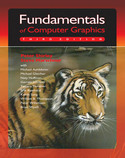 |
Fundamentals of Computer Graphics by Peter Shirley, A.K. Peters
The 3rd edition recently came out, but the 2nd edition is also fine to use
for the course.
|
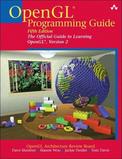 |
OpenGL Programming Guide versions 3.0 and 3.1 by the OpenGL Architecture Review Board
Addison Wesley, ISBN: 0321335732, (7th edition)
Version 1.1 of the "Red Book" is also available online for free, for example at the official
OpenGL website: www.opengl.org/documentation.
This doesn't cover newer OpenGL features, but this course won't necessarily need the more advanced
features, and depending on your platform they may not be available anyhow.
|
Note that while the textbooks are listed as required, and are highly recommended as fantastic
books to own for both this course and future work you might do in graphics, it's not critical to
buy them if you can't afford them. Lectures and the older online version of the Red Book should
suffice if you are a diligent student.
Discussion Group
There is a Google group for this offering: cpsc314
You will need to join Google groups to get access. It is not required to be part of this
group, but it's probably a good idea to have an opportunity to discuss problems amongst yourselves (and I'll
join in), post relevant links, look for a partner for the final project, etc.
Sampling
Here are audio examples of sampling at work:
- piano.mp3, the original (16 bit, 44100Hz).
- piano_point.au, point downsampled by a factor of 20 to 2205Hz. Notice the horrible aliasing of unresolved high frequencies showing up as distorted "ghost" low frequencies.
- piano_quad.au, downsampled by a factor of 20 to 2205Hz, with a quadratic B-spline filter. It's not enough to remove all aliasing, but it dampens it significantly.
- piano_quadbox.mp3, reconstructing the previous audio with a box filter (nearest neighbour interpolation) instead of relying on your computer's much better automatic reconstruction. Notice the terrible artifacts of distorted high frequencies caused by the discontinuity of the box filter.
- piano_quantized.mp3, the original directly quantized to 5 bits. Notice the horrible distortion, vaguely similar to the box filter problems: we've introduced all sorts of bad higher frequencies correlated with the original signal.
- piano_dithered.mp3, quantized to 5 bits after adding random dither. Notice the distortion is gone, replaced with background white noise that should be easy to filter out.
All of these are in the public domain (it's a recording I made of myself playing the piano) and can be freely used as you wish.
Likewise, here are images showing sampling and filtering at work in
texture maps.
Using box filter (i.e. nearest neighbour) for magnification, nothing for minification. Note the horrible blocky artifacts near the camera, and the strange aliased patterns in the distance. These aliases are low spatial frequency ghosts of spatial frequencies that are too high to be resolved at this pixel resolution.
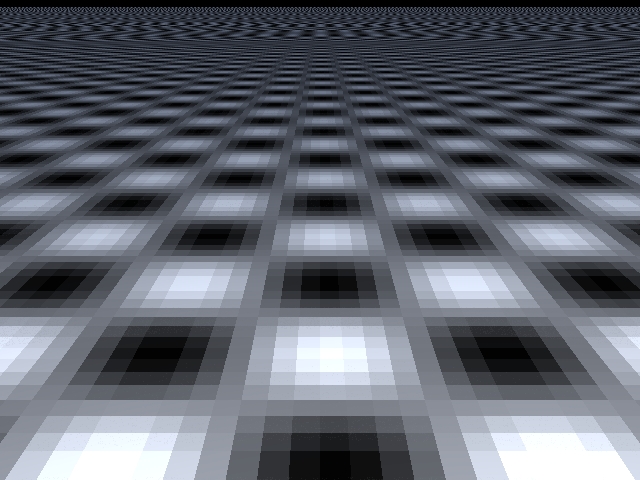
Using an optimal smooth filter for magnification, nothing for minification. Note the image is essentially perfect near the camera, but the strange aliased patterns in the distance persist.
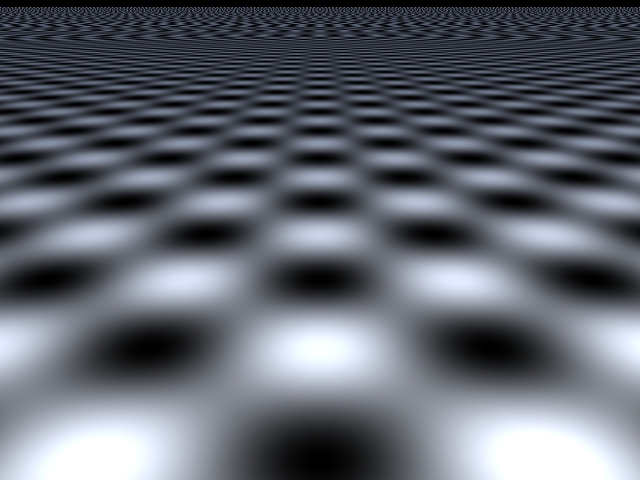
Using the same optimal smooth filter for magnification, but a smoothing filter for minification. Most of the aliasing in the distance has been removed (a faint residual remains) so we get almost the best image (uniform grey) we can get at this pixel resolution.
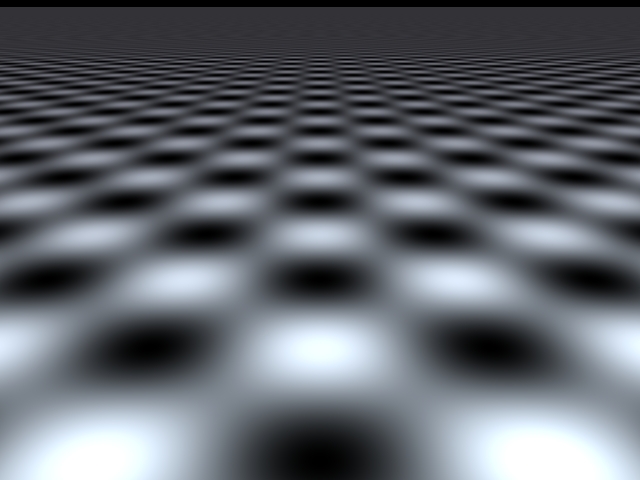
Links
- OpenGL.org is the official web site for OpenGL, with
lots of useful stuff.
- Eric Weisstein's World of Science at Wolfram
is sometimes helpful for looking up facts, tables, etc...
- Nate Robins' OpenGL resources
includes a place to download GLUT for Windows, as well as some great tutorial programs to
make it easier to learn the OpenGL API.
- Subdivision.org has some nice Java applets demonstrating
mesh subdivision.
- Teddy is one of the most famous
sketch-based modeling tools.




